Themed collection HOT articles in Inorganic Chemistry Frontiers for 2014

Magneto-chiral dichroism in chiral mixed (phthalocyaninato)(porphyrinato) rare earth triple-decker SMMs
Significant magneto-chiral cross effect revealed for chiral mixed (phthalocyaninato)(porphyrinato) dysprosium triple-decker SMMs suggests the great potential of sandwich-type tetrapyrrole rare earth systems in magneto-chiral dichroism.

Inorg. Chem. Front., 2014,1, 167-171
https://doi.org/10.1039/C3QI00097D
Modulating the copper–sulfur interaction in type 1 blue copper azurin by replacing Cys112 with nonproteinogenic homocysteine
Replacement of conserved Cys112 in azurin with a nonproteinogenic amino acid homocysteine affords a type-1 copper site with decreased Cu–SCys covalency.
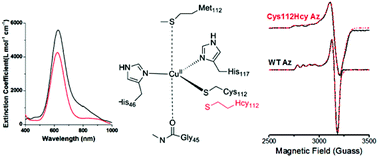
Inorg. Chem. Front., 2014,1, 153-158
https://doi.org/10.1039/C3QI00096F
Perfect encapsulation of a guanidinium ion in a helical trinickel(II) metallocryptand for efficient regulation of the helix inversion rate
The helix inversion rate of a helical metallocryptand was efficiently controlled by perfect encapsulation of a guanidinium ion in the cavity.

Inorg. Chem. Front., 2014,1, 53-57
https://doi.org/10.1039/C3QI00067B
Influence of an anti-metastatic ruthenium(III) prodrug on extracellular protein–protein interactions: studies by bio-layer interferometry
In the first application of bio-layer interferometry in medicinal inorganic chemistry, Fe(III)–transferrin (Tf) binds strongly to Tf receptor 1 (TfR1), but a Tf adduct of the anti-metastatic prodrug, NAMI-A does not bind specifically to TfR1.

Inorg. Chem. Front., 2014,1, 44-48
https://doi.org/10.1039/C3QI00054K
In search of structure–function relationships in transition-metal based rectifiers
Using the paramagnetic moment of transition metal ions to tune the transparency of molecule–electrode heterojunctions holds the key to controlling current rectification.

Inorg. Chem. Front., 2014,1, 468-477
https://doi.org/10.1039/C4QI00038B
2,2′-Bis(3-hydroxy-1,4-naphthoquinone)/CMK-3 nanocomposite as cathode material for lithium-ion batteries
The H2bhnq/CMK-3 nanocomposite, which was synthesized by a simple impregnation method, exhibits a high electrochemical performance as the cathode of lithium-ion batteries.
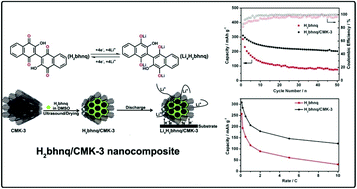
Inorg. Chem. Front., 2014,1, 193-199
https://doi.org/10.1039/C3QI00076A
Room-temperature ABX3-typed molecular ferroelectric: [C5H9–NH3][CdCl3]
A hybrid organic–inorganic perovskite-type compound [C5H9–NH3][CdCl3] was constructed through the deliberate selection of organic cations, and found to exhibit ferroelectricity.
![Graphical abstract: Room-temperature ABX3-typed molecular ferroelectric: [C5H9–NH3][CdCl3]](/en/Image/Get?imageInfo.ImageType=GA&imageInfo.ImageIdentifier.ManuscriptID=C3QI00058C&imageInfo.ImageIdentifier.Year=2014)
Inorg. Chem. Front., 2014,1, 118-123
https://doi.org/10.1039/C3QI00058C
Pt/Ru/C nanocomposites for methanol electrooxidation: how Ru nanocrystals’ surface structure affects catalytic performance of deposited Pt particles
The surface structure of supporting materials has great effect on the catalytic performance of supported catalysts.

Inorg. Chem. Front., 2014,1, 109-117
https://doi.org/10.1039/C3QI00053B
Sandwich-like carbon-anchored ultrathin TiO2 nanosheets realizing ultrafast lithium storage
This work develops an in situ carbonization of organic octylamine for fabricating sandwich-like carbon-anchored ultrathin TiO2 nanosheets, which exhibit superior lithium-battery performance.

Inorg. Chem. Front., 2014,1, 58-64
https://doi.org/10.1039/C3QI00050H
Zirconium trisulfide ultrathin nanosheets as efficient catalysts for water oxidation in both alkaline and neutral solutions
Zirconium trisulfide ultrathin nanosheets were fabricated, achieving efficient water oxidation activity in both alkaline and neutral solutions.
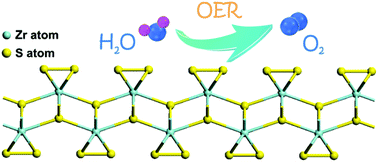
Inorg. Chem. Front., 2014,1, 751-756
https://doi.org/10.1039/C4QI00127C
Molecular recognition of Ca2+ cations by internal and external receptors/interfaces in a spherical porous molybdenum-oxide capsule: unusual coordination scenarios
The molybdenum-oxide capsule [{(MoVI)MoVI5O21(H2O)6}12{MoV2O4(SO4)}30]72− binds an unprecedented number of Ca2+ cations by its internal/external receptors via direct coordination and/or hydrogen bonds.
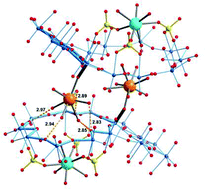
Inorg. Chem. Front., 2014,1, 740-744
https://doi.org/10.1039/C4QI00131A
Enhancement of photovoltaic efficiency by insertion of a polyoxometalate layer at the anode of an organic solar cell
Thick layers of the Wells–Dawson K6[P2W18O62] highly ordered were obtained and integrated at the anodic interface of organic solar cells to reach high power conversion efficiency.
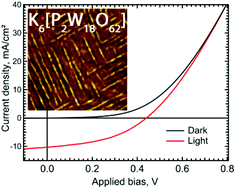
Inorg. Chem. Front., 2014,1, 682-688
https://doi.org/10.1039/C4QI00093E
A biomimetic photoelectrochemical device from a molecular heterometallic sodium–manganese water splitting catalyst
A new nanoparticulate heterometallic NaMn2Ox derived from a molecular [Na2Mn4] precursor was stabilized within a PEDOT : PSS/Nafion membrane for water splitting.

Inorg. Chem. Front., 2014,1, 705-711
https://doi.org/10.1039/C4QI00081A
Fabrication of Fe/Fe3C@porous carbon sheets from biomass and their application for simultaneous reduction and adsorption of uranium(VI) from solution
Carbon-encapsulated Fe/Fe3C nanoparticles embedded in porous carbon sheets (Fe/Fe3C@PCS) were fabricated by a one step carbothermic reduction, using natural abundant biomass derivatives.

Inorg. Chem. Front., 2014,1, 641-648
https://doi.org/10.1039/C4QI00071D
Intramolecular oxidative cyclization of alkenes by rhodium/cobalt porphyrins in water
Heterocycle construction strategy: intramolecular oxidative cyclization of alkenes was realized by rhodium(III)/cobalt(III) porphyrins in water.

Inorg. Chem. Front., 2014,1, 544-548
https://doi.org/10.1039/C4QI00066H
About this collection
Read some of the best research published by Inorganic Chemistry Frontiers in 2014. These articles are recommended by ICF referees as being of significant novelty and interest.